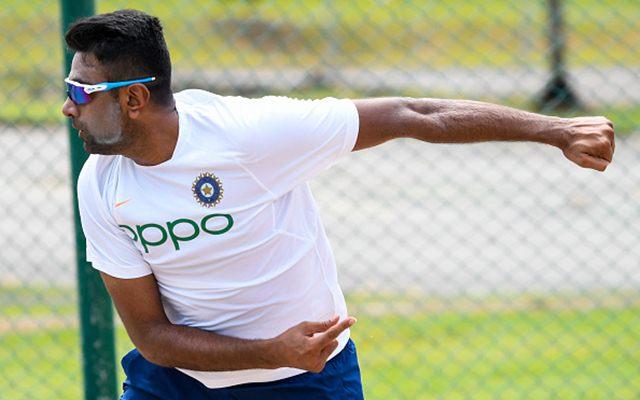Ravi Ashwin urges ICC to disallow non-strikers from backing-up; bats to restore balance between bat and ball
To say that the batsmen and bowlers are at an equal proportion would be a fallacy in the modern world.
View : 570
2 Min Read


The sport of cricket has come a long way since its inception in 1877. To say that the batsmen and bowlers are at an equal proportion would be a fallacy in the modern world. The advancements and modern rules have made the game much easier for a batsman than a bowler.
Indian spinner Ravi Ashwin, on Tuesday, took to Twitter to urge the International Cricket Council (ICC) to make rules to disallow the non-striker batsman from backing up before the bowler bowls a ball. Backing up means that the batsman leaves his popping crease and walks towards the other end of the wicket so that it will take him less time to reach the other end if he and his batting partner choose to attempt a run.
Though the bowler can run out the non-striker batsman if he is out of his crease, it is considered against the spirit of sportsmanship. Ashwin had to face a lot of hate during the last year’s IPL when he sent Jos Buttler back to the pavilion using the same technique.
Ravi Ashwin plea to ICC regarding the backing-up of a batsman
In his tweet, the Indian spinner suggested that the runs should be disallowed if the batsman leaves the crease at the non-striker’s end before the ball is bowled. Citing the tough environment for the bowlers, in his Twitter thread, Ashwin laid stress on how the batsman gets an unfair advantage by leaving the crease early.
“Just hope that technology will see if a batsmen is backing up before the bowler bowls a ball and disallow the runs of that ball every time the batter does so!!Thus, parity will be restored as far as the front line is concerned. #noball #dontbackup,” wrote Ashwin
Just hope that technology will see if a batsmen is backing up before the bowler bowls a ball and disallow the runs of that ball every time the batter does so!!Thus, parity will be restored as far as the front line is concerned. #noball #dontbackup
— Ashwin 🇮🇳 (@ashwinravi99) July 28, 2020
“Many of you will not be able to see the grave disaparity here, so let me take some time out to clarify to the best of my abilities. If the non striker backs up 2 feet and manages to come back for a 2, he will put the same batsmen on strike for the next ball.”
Many of you will not be able to see the grave disaparity here, so let me take some time out to clarify to the best of my abilities. If the non striker backs up 2 feet and manages to come back for a 2, he will put the same batsmen on strike for the next ball.
— Ashwin 🇮🇳 (@ashwinravi99) July 28, 2020
“Putting the same batsmen on strike might cost me a 4 or a 6 from the next ball and eventually cost me 7 more runs instead of may be a 1 and a dot ball possibility at a different batsmen. The same will mean massively for a batter wanting to get off strike even in a test match.”
Putting the same batsmen on strike might cost me a 4 or a 6 from the next ball and eventually cost me 7 more runs instead of may be a 1 and a dot ball possibility at a different batsmen. The same will mean massively for a batter wanting to get off strike even in a test match.
— Ashwin 🇮🇳 (@ashwinravi99) July 28, 2020
“It is time to restore the balance in what is an increasingly tough environement for the bowlers. #thefrontcrease #belongs to #bothparties @bhogleharsha we can use the same tech that we are proposing for a no ball check 120 balls in a T 20 game.” the 33-year-old concluded.
It is time to restore the balance in what is an increasingly tough environement for the bowlers. #thefrontcrease #belongs to #bothparties @bhogleharsha we can use the same tech that we are proposing for a no ball check 120 balls in a T 20 game.
— Ashwin 🇮🇳 (@ashwinravi99) July 28, 2020
Last year, ICC had announced that the front-foot no-balls would be monitored by the third umpire as the umpires often faced criticism for failing to recognize a no-ball. The right-arm off-break spinner believes that the same technology can be used to monitor that the batsman doesn’t back-up before a ball is bowled.
Download Our App